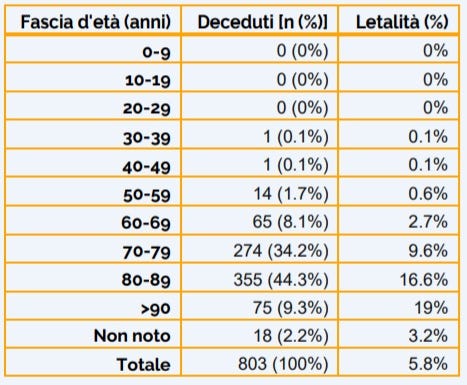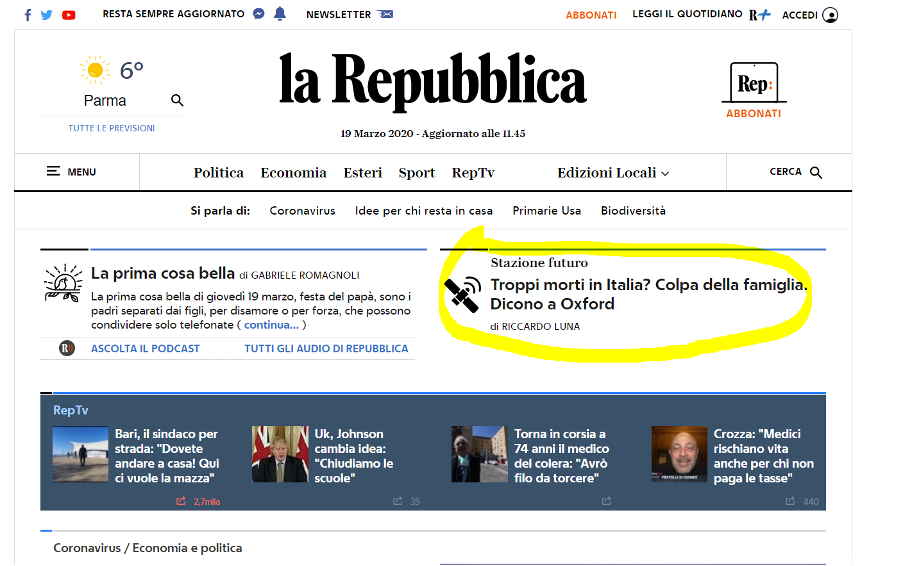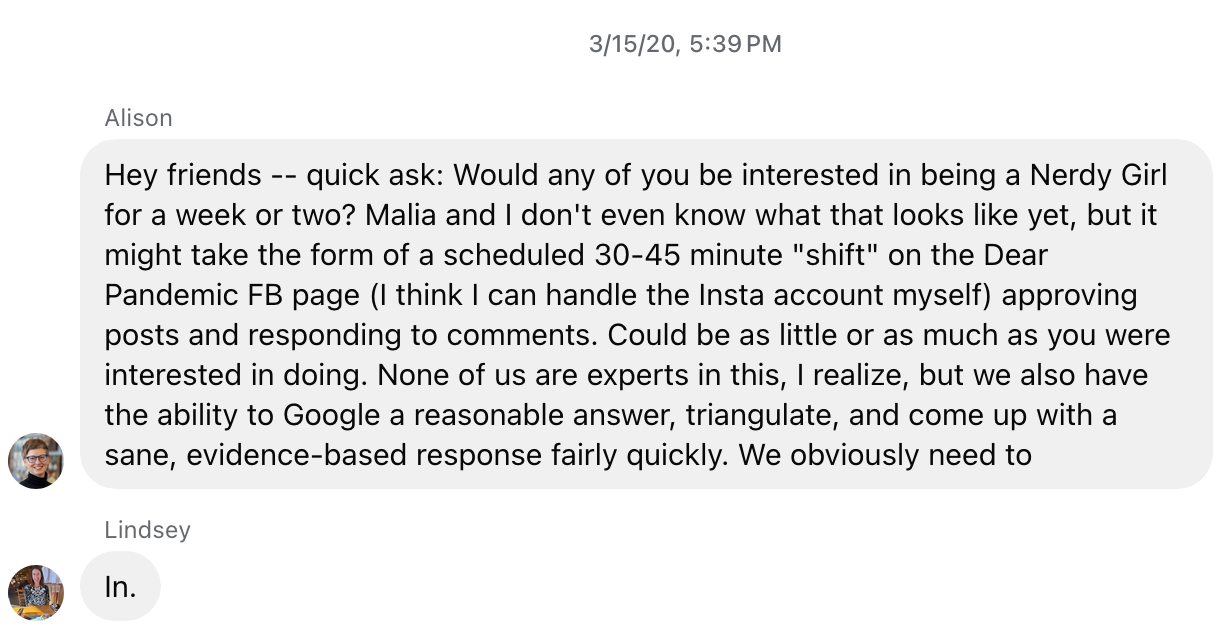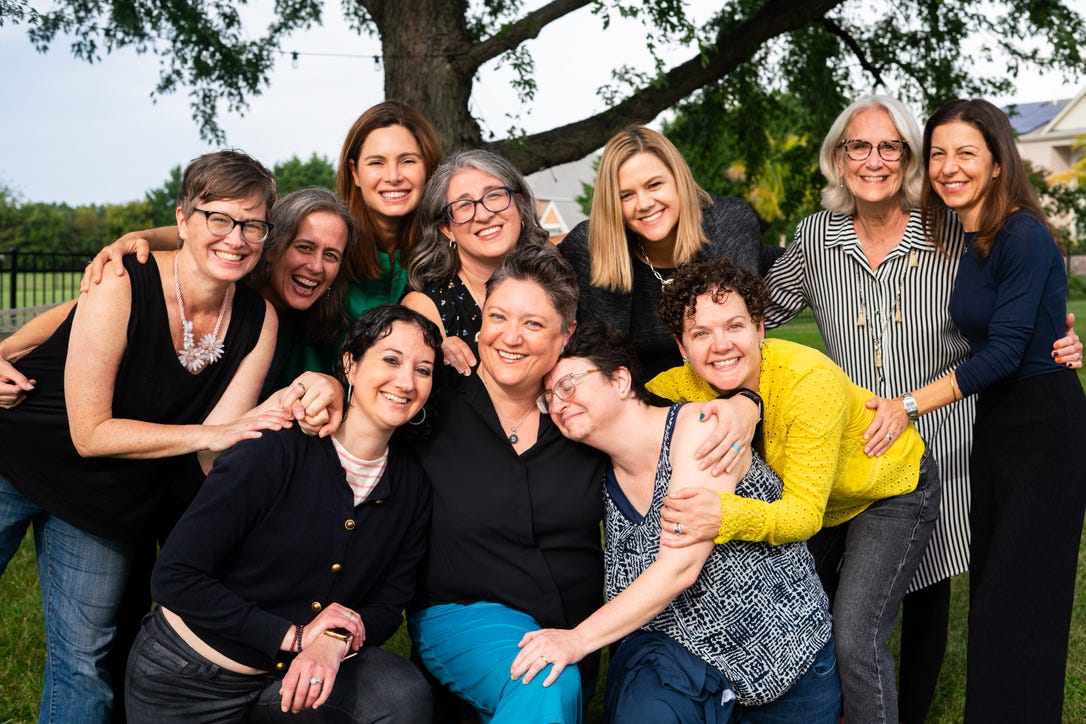London, March 2020.
March 15 felt like the right day to launch this Substack.
March 15, 2020 was the sharp line dividing my pre and post-COVID life. That week was business almost-as-usual as a Professor at Oxford. I taught my statistics class, met with students, and huddled in a conference room hammering out a paper with my colleagues about the new coronavirus. By the end of the day Friday, the 13th we said our goodbyes, thinking we would be back in the office in a few weeks. I wouldn’t see my office again until July 2021. A photo calendar open to March 2020 still hangs above my desk, a shrine to that moment frozen in time.
Over the weekend, we realized we should get our paper on coronavirus mortality out as quickly as possible, given how quickly the situation was evolving. We fumbled a bit creating our first official pre-print but eventually figured it out. On Sunday, the 15th, I woke up and composed my first-ever twitter thread to summarize our paper. At this time, we still knew very little about this completely novel pathogen. Was it actually worse than the flu? While this refrain later became a way to minimize COVID, it was a hugely important question early on as societies grappled with when and how to take potentially drastic measures to prevent further spread. My mind went back to the 2009 H1N1 pandemic, where the mortality first seen in Mexico turned out not as bad as feared as the virus spread globally. Maybe (hopefully) that would be the case with the novel coronavirus?
Italy was one of the first places to see significant mortality outside of Wuhan, and despite being a higher-income country with good health care, the deaths were mounting. Our newly launched Leverhulme Centre for Demographic Science was a small crew that included young scholars from Italy who were getting on-the-ground reports of how dire things were. We started anxiously awaiting the daily mortality updates from the Italian National Institute of Health. As demographers, something immediately jumped out to us about the data-deaths were heavily concentrated at older ages:
Number and % of deaths in each age group (2nd column) and Case Fatality Rates by Age (3rd column), Italy (March 12, 2020) Source: Istituto Superiore di Sanità.
While this now feels like an obvious fact about SARS-CoV-2, it was not a given. Influenza deaths tend to hit both the young and old, and the 1918 flu pandemic saw high death rates among young adults. But in Italy, over 98% of deaths so far were in people over age 60. In this light, Italy’s overwhelmed hospitals made more sense-Italy was the 2nd oldest country in the world in 2019, with over 23% of the population above 65, making them particularly vulnerable.
And it wasn’t just us-on the day our pre-print came out I was comforted to know we were extremely on brand for demographers:
Our paper presented simple examples of how COVID mortality might play out in countries with different age structures, using a favorite visualization of demographers: population pyramids. You can read the original pre-print or published paper here.
Dowd, Jennifer Beam, et al. "Demographic science aids in understanding the spread and fatality rates of COVID-19." Proceedings of the National Academy of Sciences 117.18 (2020): 9696-9698.
The main takeaway was that with very simple assumptions about the percentage of the population infected and the strong age-mortality association seen in Italy, countries with older populations would see many more deaths than similarly sized countries with younger populations. So, Italy would be expected to have more deaths than South Korea, even with the same proportion of infections. Brazil would be expected to have a lot more deaths than Nigeria, because of the high proportion of the population at young ages in Nigeria (like a real pyramid). While obviously overly simplistic, since SARS-CoV2 had not yet spread widely, we felt this basic point could be important for identifying and preparing places that were particularly vulnerable.
While age structure would remain an important factor for understanding COVID mortality worldwide, demography was not necessarily destiny. Japan, the oldest country in the world, managed to avoid mass infection until after vaccination and saw relatively low mortality. The US, on the other hand, saw more deaths than were expected given its age structure, as deaths were more common at younger ages compared to other high-income countries, likely due to worse underlying health and less social protection from exposure. But all of this COVID history was yet to be written by March 15, 2020.
Our pre-print also included an analysis of cases in the provinces of Lodi and Bergamo, led by Italian post-doctoral researcher Dr. Valentina Rotondi. Lodi had shut down two weeks earlier than Bergamo, providing a potential opportunity to evaluate the impact of reducing social contact early in an outbreak.
That Sunday afternoon, taking a long walk in the strangely but mercifully sunny weather in London that Spring, my phone “blew up” for the first time in my life with twitter notifications (which were quickly turned off for good). While my own thread did OK for a twitter novice, the real action came from a re-tweet by
(thanks Don!).By Monday, life was a blur of media requests including finding out our “flatten the curve” figure was on national TV in Italy:
Our paper also noted the relatively high levels of intergenerational households and contact in Italy, which may have accelerated the early spread of COVID from young people working in Milan to their older relatives. This led to another favorite headline implying that Oxford researchers claimed high mortality in Italy was “the family’s fault.” 😳
Weeks later, high rates of multi-generational living among immigrant families in New York City would contribute to the rapid spread and high COVID mortality there.
It was all surreal. I had never done media and was terrified at the prospect. But given the urgent need for any information, I forced myself to lean into my discomfort. Besides media, our research team was quickly contacted by local governments around the world asking for help anticipating their healthcare strain based on demographic data. That week turned out to be just the beginning of a very wild ride.
Accidental Science Communicator
“I'm just going to listen to whatever those nerdy girls say."
March 15, 2020 was also the day Alison Buttenheim reached out asking if I would join her and a couple other academic friends in public health to answer questions on Facebook “for a week or two” about the emerging pandemic.
With Lindsey Leininger’s lack of hesitation leading the way, the rest is history. An early reader coined our nickname “Those Nerdy Girls.” Please read this great account of the Dear Pandemic origin story by Malia Jones, but needless to say this little Facebook page grew into something much bigger that changed my life more than anything else during the pandemic. Besides the comfort of finding a way to contribute our skills during a global crisis, we quickly became a Nerdy sisterhood, holding each other up emotionally day after day. As the lone UK-based Nerdy Girl at the time, I cradled my phone in bed at night, not wanting to say goodnight to the soothing ping of Slack messages from my Nerdy Girls on US time.
Well that escalated fast… Those Nerdy Girls in National Geographic
From this remarkable group of women, I learned not only how to communicate science clearly (with memes!) and build a plane while flying it (as Lindsey likes to say), but also how to work intensely with people while never losing sight of the empathy, respect, and love we had for each other. Even as the group has grown and evolved over the last five years, the beautiful culture of this extraordinary community persists. I feel incredibly proud of everything Those Nerdy Girls have built and how the group continues to show up as trusted messengers no matter the public health crisis.
The first Nerdy Girl gathering in real life, Fall 2023. Many tears were shed.
From this incredible foundation built since March 2020, I’m excited to start a new “era” and newsletter of my own (while still collaborating with and cheering on
). For me, this represents a way to push myself further to keep writing and speaking up for the science. The current challenges facing public health have awakened the fire in me that I first felt so urgently in March 2020. I’ll admit this time feels different, and harder. In March 2020 there was (for a time) a sense of solidarity and earnest desire to work together to push forward science and save lives. Now, I feel deep sadness that we’ve become our own worst enemies and are turning our back on the amazing gifts science has given us, as well as scientists themselves. I feel a great responsibility as a scientist and as a human to connect and understand our current polarization and distrust of each other. I’m ready to dig deep and show up every week to deliver clear, analytically rigorous takes on all the important health data coming your way. I want to communicate the practical facts and the wonder and power of data to make our lives better.I absolutely LOVE my job as a researcher and Data Nerd. I still feel like a kid every day when I get to learn new things, and I hope that curiosity comes through in my writing. I will dive into familiar topics that I have covered routinely for the last five years including COVID and other infectious diseases. But I will also take the opportunity to write more about topics I’m currently researching, including life expectancy and aging trends, GLP-1 drugs, and LOTS more. You can count on me for a healthy skepticism about that new medical headline, and clear explanations of what the data can and can’t say. More than anything, I want to give you easy access to the best information to live your happiest and healthiest life.
Thanks for reading, and please consider sharing this Data for Health with the Nerds in your life!
Jenn















Do you remember, wayyy pre-Pandemic, those blockbuster movies about how, when the Giant Meteor (or whatever) was coming to kill us all, the GOVERNMENT (with the help of a Bruce Willis type) came to save us? Well, funnily enough, you, Jenn, and your fabulous contemporaries at Nerdy Girls, were the ones who came and saved us from disinformation, misinformation, and a fair amount of government-initiated chaos. We, the ordinary citizens who were looking to so many different sources (CDC, WHO...Facebook?!?!) of information on how to keep our families safe during those first devastating months of the pandemic (and Thank God the mortality rate wasn't worse than what it was --- what a drastic thing that would have been!) -- well, I digress. To you and your contemporaries, Jenn, there aren't enough words sufficient to thank you. So glad you are still taking up the challenge. God forbid we have to go thru it again with something more lethal. God bless you for all that you have done. Sincerely yours,
I have kept my work office March 2020 calendar up as well. ❤️